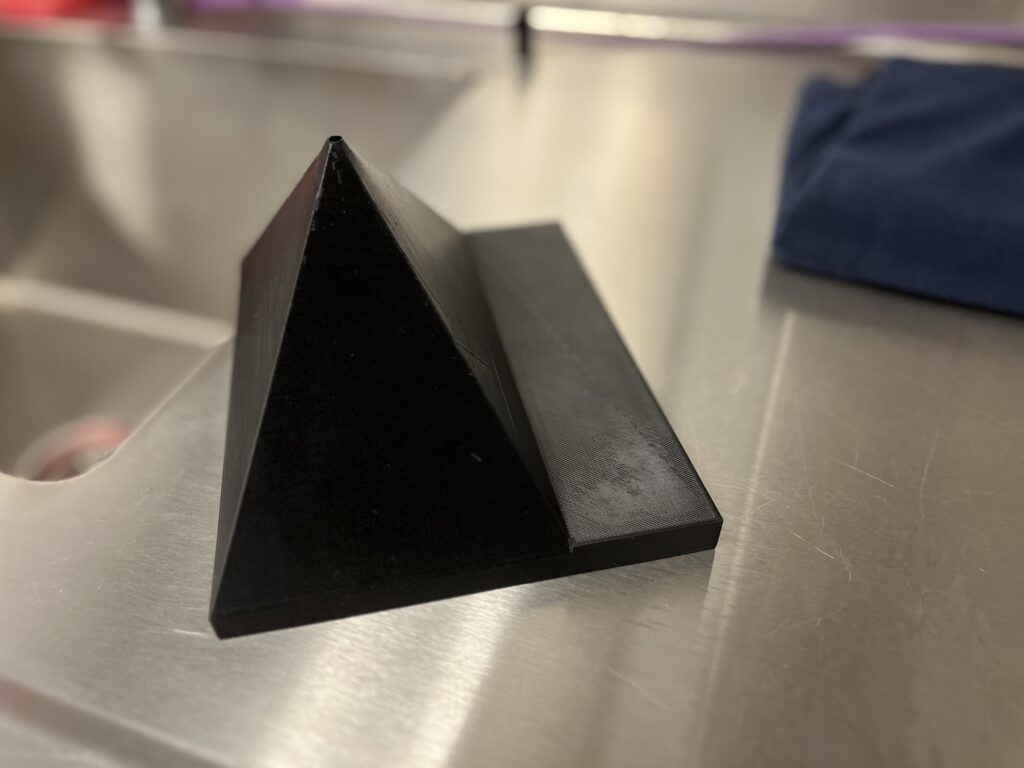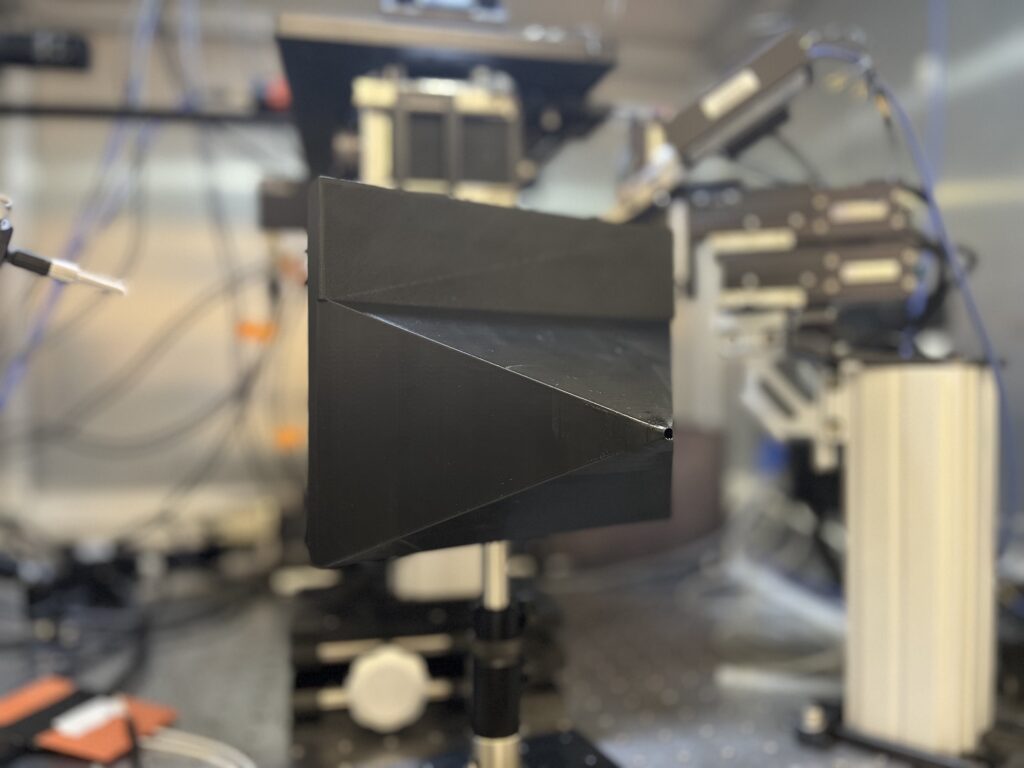A fantastic shroud for visual stimulation during imaging

In two photon imaging, we want the detector (photomultiplier / PMT, or SiPM) to see only the green photons from the fluorescent molecules we’re interested in (e.g., GCaMP6s or GCaMP8m). We don’t want any other light around. So we have to shield the detection pathway from any other sources of light.
The brightest light is the infrared (IR) excitation light, but since its wavelength is very different, we can use IR blockers, shortpass filters, and/or bandpass filters to protect from that. The harder problem is sources that overlap spectrally– other visible light sources such as overhead room lights and computer monitors.
We can put the microscope in a light tight box. And that solves it in some cases, but what if the experiment uses visual stimulation? Then you need to get the visual stimulation light to the eye, but keep it out of the detection pathway.
We can ensheath the microscope objective and connect it to the headcap. That way the only light that makes it to the detector is from the headcap and window area. And again, this solves it for a lot of applications. For most of our Diesel2p experiments, this is what we do (and we have design info for the 3D printed cone shared at the Nemonic site– let me know if you want access to it!). However, this blocks access to the headplate area. If you want to get a patch pipette in there and record from neurons and/or dendrites, then you can’t use that approach.
When you need access to the headplate area, while also protecting the detection pathway from light from the stimulus, then you can use a shroud from the monitor to the eye. Making these things is not difficult, but they can end up a bit less than neat, at least my early attempts were. Yiyi Yu (postdoc in the lab) made some really nice ones out of black cardstock and electrical tape, using careful measurements and patience. Most recently Liam Adsit (graduate student in Ikuko Smith‘s lab) made a nice 3D printed one that I think is worth sharing. I love it. Very neat and tidy and stands up to more abuse than my earlier versions. Liam and Ikuko have kindly agreed to share the CAD files (STL, SLDPRT). I’ll put them on the Nemonic site. Again, let me know if you need access to it.



P.S., You can also try to spectrally separate the visual stimulation. Or you can try turning the visual stimulus on and off quickly so that you’re not imaging and visually stimulating at the same time. For my experiments, I’ve found it easier and more flexible to simply use a shroud.
